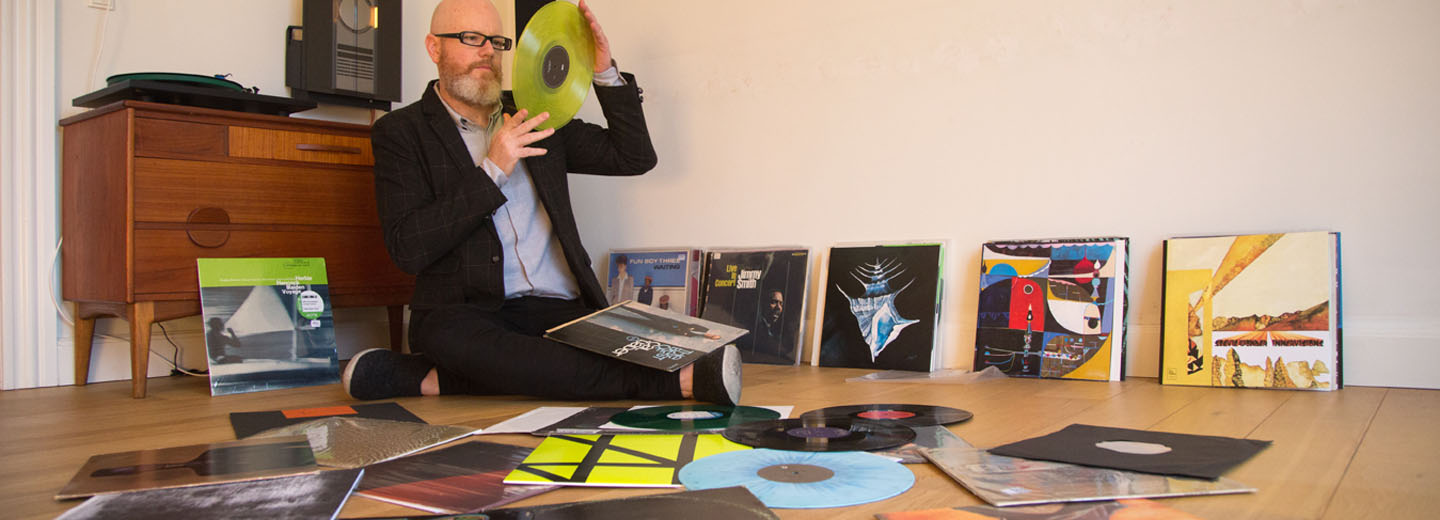
The vinyl record re-enters a digital world
Today we stream music on our smart phones and we are saturated by digital experiences. That is why vinyl records are becoming more popular, explains an Associate Professor at the University of Southern Denmark (SDU).
Stine Charlotte Hansen, stich@sdu.dk, 11.02. 2016
Most of us listen to music on our phones, but many people are becoming fascinated by shiny black vinyl records. At Christmas, the American online giant Amazon was able to announce that the best-selling domestic audio player was the record player.
The heyday of vinyl was the 60s and 70s, but vinyl records disappeared when the CD conquered the market. Now there is a revival.
There are several reasons for this, explains the sociologist, Ian Woodward, Associate Professor in the Department of Marketing and Management, adding that the vinyl record was never completely extinct.
Vinyl records were hiding in the underground
- They did not die. The vinyl record lived on in the underground scenes of New York, Berlin and London. It retained importance for independent music and club communities, and now is more widely attracting a cool and hip factor. More and more, people are starting to recognise that fact, says the researcher.
That is why he regards the record as a status symbol. It matches a certain kind of lifestyle that involves exploring music in greater depth. When they made their breakthroughs, the music of major groups such as the Beatles and the Rolling Stones was released on vinyl.
- There are consumers who feel that you should listen to music in the format it was released in, if you are to get a real sense of the sound of the era. The amazing thing is that you can play a record, which is 50-60 years old, and it can still be perfect.
The sound from a record is special
The CD is the big loser, concedes Ian Woodward, because no one is buying CDs anymore. They are cheap and easy, but still digital. A vinyl record costs more to produce, it is more expensive to buy, it is heavy and tricky to transport.
But a vinyl record is beautiful. We can touch it. It says something about its owner.
- The fact that I can hold it in my hands and place it on a shelf is significant. I can see my collection and take care of it. Digital music is a mass-market way of listening to music. Though convenient, for some people it has been a slightly superficial and empty way of listening and collecting music, says Ian Woodward.
Love of records a backlash
He regards the growing predilection of consumers for records as a reaction against digitised culture. You can download music on your telephone and listen to it day and night, but some people consider this constant availability as an inferior way of listening to music.
- We are saturated with digital audio experiences. Listening to music on a mobile phone is a totally personal experience. Listening to vinyl records is another kind of experience often with an emphasis on collective listening rituals, says Ian Woodward.
- The cool atmosphere related to a vinyl record is significant to our perception of it. You can sit with a glass of wine or a cup of coffee and read the cover while you listen to the record. Or you can party.
Vinyl records are becoming mainstream again
Today the vinyl record has made a serious comeback. It is no longer just underground indie bands and jazz orchestras who release their music on vinyl. Major artists like Adele and Justin Bieber are recording on vinyl.
Ian Woodward predicts a change in the market for vinyl records.
- If the sale of vinyl records moves from small record shops and the records are also sold in major chains, the perception of the vinyl record will change too, he says. There will almost certainly be continued growth for some years, however, and now major companies are also releasing ranges of affordable turntables, which will also further fuel growth in mainstream markets.
The production of records is not large
However, there is a technological limit to how fast things can go in terms of selling records.
It takes specially trained labour and special machines to manufacture records. When vinyl records went out of fashion, the production chain went belly up. This meant a loss of knowledge and production sites.
- Today, the few existing manufacturers are extremely busy. The natural limit to how quickly the factories can turn the records out means that the capacity is not very high. Given the interest of major artists, the big record companies will push for more records. It will be interesting to follow developments, says Ian Woodward.
Meet the researcher
Associate professor Ian Woodward does his research at the Department of Marketing and Management.
Facts about record sales in Denmark
From 2013 to 2014, the sales of vinyl records increased by 27.9%. The record’s share of physical sales of music increased five-fold from 2011 to 2014. Source: ‘Music Companies 2014 - Figures and Perspectives’
